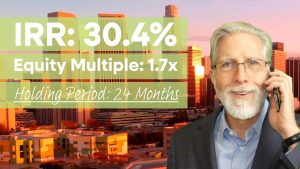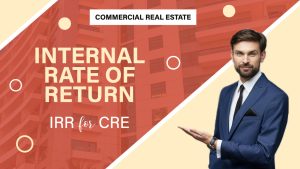Takeaways
- Respondents in a well-known investor survey anticipate short-term decreases in market value.
- Class B properties, described as “philosophically obsolete,” will bear the brunt of these declines.
- Conditions are growing favorable to acquire properties for upgrade or conversion at deep discounts.
One third of US office inventory is doing fine; another third needs to be upgraded in order to remain competitive; and the final third should either be converted to other uses or simply demolished. Those are some of the findings in a recently published survey of institutional investors. AFIRE, the Association of Foreign Investors in Real Estate, is a trade association that focuses on commercial property in the United States. Its Fall 2023 Pulse Report marks the latest in a series of annual surveys, ongoing for more than 30 years.
Market Values to Decline
The overwhelming consensus of the respondents was that market values for office properties are going to decline over the next 12 months. That said, they felt strongly that Class B properties would bear the brunt of these declines, with some six in 10 respondents expressing the opinion that market values for those assets would decrease by over 20%. In comparison, only about two in 10 respondents are expecting decreases of that magnitude for Class A assets. Also of note, some nuances are attributable to locational differences. For example, gateway markets are expected to fare better than secondary and tertiary markets.
Differences in Class A and Class B Properties
You might be wondering what’s so bad about Class B properties. As pointed out in the report, much of our existing office inventory was built to suit now antiquated attitudes about work, and more specifically, work-life balance. They use the term “philosophically obsolete” to describe office buildings that have not kept pace with rapid technological advancements and hybrid work trends. This is especially true of Class B properties, many of which were developed prior to 1990.
Class A properties, on the other hand, tend to either be newer or they’ve already undergone significant renovation and upgrades. Companies may have reduced the amount of space they lease, at least compared to before the COVID-19 pandemic, but the space they do lease needs to be better. It needs to be modern and agile, with lots of services. For the most part, those attributes are already part and parcel of Class A properties, so they are very much the beneficiary of an ongoing flight to quality among tenants.
Functional Obsolescence is the Key
Whereas AFIRE coined the phrase “philosophically obsolete” to describe the two-thirds of office inventory that needs to be ungraded, converted, or demolished, being a former appraiser, I would have described their predicament as functional obsolescence. Regardless of how you describe it, market value is of course very much a product of supply and demand. When demand for a property decreases because it lacks certain features, amenities, or functionality, its market value will also decrease.
In a previous article, I made a distinction between office properties that are future-ready and those that are not. This was partially a reference to changes in tenant preferences for mechanical systems that promote health and wellbeing, things such as more effective air filtration systems, touchless doors, elevators, and light switches, and IoT-enabled technology to inform tenants of systems performance and safety concerns in real time – just to name a few. It also encompassed changes in design, layout, and amenities, putting more emphasis on worker experience in the office to promote creativity, collaboration, and comfort.
Some Functional Obsolescence is Curable…
The good news about functional obsolescence is that it’s often curable. With well-placed capital expenditures, you can make needed upgrades to a property, repositioning it in the market to benefit from stronger demand, premium rents, and of course increased market value. Investors refer to this as a value-add strategy. As previously noted, survey respondents in this year’s Pulse Report are of the opinion that about a third of office inventory in the United States needs to be upgraded.
… and Some is Not
That leaves us to contend with the remaining third of inventory, the portion that should either be converted to other uses or simply demolished. Getting a little more granular, the respondents feel that 15.8% of office buildings in the United States should be converted to other uses, primarily residential uses. Finally, they feel that 17.5% of existing inventory should be demolished. These are the properties that don’t warrant upgrades or conversions because the cost would never be recouped. Putting my appraiser hat on again, when the improvements no longer contribute any value to a property due to some combination of functional, economic, or physical obsolescence, it’s time to tear them down. Their obsolescence is incurable.
Anticipating Deep Discounts
With over $156 billion in loans secured by income-producing office properties coming due soon at banks, and many of those banks unenthusiastic about refinancing those loans, a lot of borrowers are about to find themselves in a tough spot. Assuming they can even obtain financing, they’ll likely be required to pay down their loans by bringing in more equity. That means they’ll be cashed-strapped and unable to make needed upgrades to their Class B properties. Faced with that proposition, selling the asset is going to start looking more and more attractive as an option, especially when the only other viable option is to hand over the keys to the bank. That will help keep downward pressure on market values long enough for savvy investors and developers to acquire the right office buildings at deep discounts, those that are good candidates for upgrade and conversion.




















